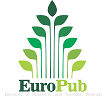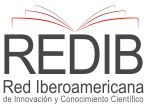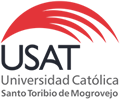CRISPR/Cas9
Gene Editing vs. Bioethics A bioethical analysis of the gene editing technique called CRISPR/Cas9
Abstract
Since the discovery of the double helix by Watson and Crick, biotechnological advances related to the world of genetics, have yielded rapid jumps for humanity. Major milestones such as DNA sequencing, the Human Genome Project, the cloning of the Dolly sheep, and even the development of genetically modified phosphorescent cats to shine in the dark, among others, have been possible with these advances. Genetic engineering is a possibility thanks to this development of science, and so since 2012, the emergence of a new technique that uses the system known as CRISPR/Cas9 has opened the borders globally, to the era of gene editing, in a faster, easier and more accessible way. When talking about new technologies of genetic modification, especially if it is about the modification of the germ line, the bioethical impact must be
Downloads
References
Act now on CRISPR babies. (2019). Nature, 570(7760), 137-137. doi:10.1038/d41586-019-01786-3.
Bermeo-Antury, E., & Quimbaya, M. (2016). Secuenciación De Próxima Generación Y Su Contexto Eugenésico En El Embrión Humano. Persona Y Bioética, 20(2), 205-231.
Bernal, C. A. (2016). Metodologia de la Investigación (3 ed.). Bogotá: Pearson Educación
Centro Cochrane Iberoamericano, traductores. Manual Cochrane de Revisiones Sistemáticas de Intervenciones, versión 5.1.0 [actualizada en marzo de 2011] [Internet]. Barcelona: Centro Cochrane Iberoamericano; 2012. Disponible en http://www.cochrane.es/?q=es/node/269
Collins, F. S., M.D., Ph.D. (2018, November 28). Statement on Claim of First Gene-Edited Babies by Chinese Researcher. Retrieved from https://www.nih.gov/about-nih/who-we-are/nih-director/statements/statement-claim-first-gene-edited-babies-chinese-researcher
Cong, L., et al. (2013). Multiplex Genome Engineering Using CRISPR/Cas Systems. Science, 339 (6121), 819–823.
C. (1997). Convention for the protection of human rights and dignity of the human being with regard to the application of biology and medicine: Convention on human rights and biomedicine: Oviedo, 4. IV. European Treaty Series - No. 164). Strasbourg: Council of Europe.
Cribbs, A. P., & Perera, S. (2017). Science and Bioethics of CRISPR-Cas9 Gene Editing: An Analysis Towards Separating Facts and Fiction. The Yale journal of biology and medicine, 90(4), 625–634.
Cyranoski, D., & Reardon, S. (2015). Embryo editing sparks epic debate. Nature, 520(7549), 593-594.
Dance, A. (2017). Better beings? Nature Biotechnology, 35(11), 1006-1011
De Lecuona, I., Casado, M., Marfany, G., Lopez Baroni, M., & Escarrabill, M. (2017). Gene Editing in Humans: Towards a Global and Inclusive Debate for Responsible Research. YALE JOURNAL OF BIOLOGY AND MEDICINE, 90, 673-681.
Doudna, J. A., & Charpentier, E. (2014). The new frontier of genome engineering with CRISPR-Cas9. Science, 346(6213), 1258096-1-1258096-9
Gamboa-Bernal, G. A. (2016). La Edición De Genes A Estudio: Los Problemas Bioéticos Que Puede Tener Esta Nueva Tecnología. Persona Y Bioética, 20(2), 125-131
Gómez-Tatay, L., & Aznar, J. (2019). CRISPR-CAS9. El mayor avance en técnicas de edición genética requiere una reflexión ética. Cuadernos De Bioética, 30(99), 171-185.
Krimsky, S. (2019). Ten ways in which He Jiankui violated ethics. Nature Biotechnology, 37(1), 19-20.
Kyrou, K., Hammond, A. M., Galizi, R., Kranjc, N., Burt, A., Beaghton, A. K., Crisanti, A. (2018). A CRISPR–Cas9 gene drive targeting doublesex causes complete population suppression in caged Anopheles gambiae mosquitoes. Nature Biotechnology, 36(11), 1062-1066
Ledford, H. (2016). Riding the CRISPR wave. Nature, 531, 156-159
Ledford, H. (2019). CRISPR babies: When will the world be ready? Nature, 570(7761), 293-296
Li, J., Walker, S., Nie, J., & Zhang, X. (2019). Experiments that led to the first gene-edited babies: The ethical failings and the urgent need for better governance. Journal of Zhejiang University-SCIENCE B, 20(1), 32-38
Normile, D. (2018). CRISPR bombshell: Chinese researcher claims to have created gene-edited twins. Science
Riordan, S. M., Heruth, D. P., Zhang, L. Q., & Ye, S. Q. (2015). Application of CRISPR/Cas9 for biomedical discoveries. Cell & Bioscience, 5(1), 1-11.
Hernandez Sampieri, R. (2014). Metodología de la investigación. (6 ed.). Mexico: McGraw-Hill
Sgreccia, E. (2014). Manual de bioética. Madrid: Biblioteca de Autores Cristianos
Uchiyama, M., Nagai, A., & Muto, K. (2018). Survey on the perception of germline genome editing among the general public in Japan. Journal of Human Genetics, 63(6), 745-748.
Vogel, G. (2015). Research on gene editing in embryos is justified, group says. Science
Vogel, G. (2015). Embryo engineering alarm. Researchers call for restraint in genome editing. Science, 347(6228), 1301-1301
The authors retain copyright.
This work is under international license Creative Commons Attribution 4.0.
The articles published by the scientific journal "Notes on Bioethics" of the Universidad Catolica Santo Toribio de Mogrovejo, Chiclayo Peru, can be shared through the international public license Creative Commons Attribution CC BY 4.0
























 LIBRARY USAT
LIBRARY USAT